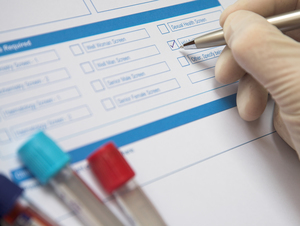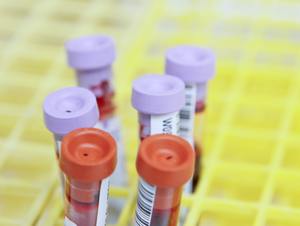Do you need to correct your calcium based on albumin levels? My doctor told me that my high calcium level was actually normal once he corrected for albumin.


The short answer is that you cannot “correct” a high calcium down to normal by looking at albumin. We use albumin to correct for low calcium levels. But this is a tricky issue, which requires a longer explanation. First, let me explain how calcium and albumin are related. Calcium in the blood can be free (not bound to anything) or bound to albumin. The free calcium is the ionized calcium, which we can check in blood tests. When we check a total serum calcium (the common form of calcium, and what we mean when we say to “check your calcium”), we are getting a number that includes free calcium and calcium bound to albumin. Most relatively healthy adults will have albumin levels in the normal range. There is a range of normal (it isn’t just one number for normal), and an albumin in range is going to give you an accurate total calcium result.
But there are some people with very low albumin levels. These tend to be very sick individuals, who are often in the intensive care unit, or dealing with a bad acute illness, or living with a severe chronic illness. Most adults walking around will not have very low albumin levels. Having a low albumin is a sign of illness.
When we check blood tests in people with very low albumin levels, the calcium level will be falsely low, because the bound calcium level will be low. In these cases, there is a rough “correction” you can do. This correction is essentially a guess of what the calcium level would be IF the albumin were in normal range. This correction is not perfect, so if you want an accurate picture of the person’s calcium status, it is better to check ionized calcium if you are worried about someone with low calcium. But back to the correction: to ensure we do not overcorrect, we use the LOWEST end of normal. The lower end of normal for albumin is 4.0, so we use this in our correction, or guess. And then here is a general guideline for correcting: for every 1.0 of albumin below 4.0, we will “add” 0.8 to the calcium level (in mg/dl). Someone with a calcium of 7.8 and an albumin of 2.0 actually has a more normal calcium level than you would guess, since we can “add” 1.6 to the calcium. This person essentially has a calcium of 9.4 - or would theoretically have a calcium of 9.4 if she had a normal albumin level. Again, this guess is not perfect, which is why for very sick individuals we will often check ionized calcium.
Here is the problem when you start correcting the other way - when the albumin is higher than the LOWEST point of normal. Remember we used the lowest point of the range so that we would not overcorrect. An albumin of 5.0 is perfectly normal. But some people will “correct” for this, thinking we need to SUBTRACT 0.8 from the calcium. Unfortunately, it just doesn’t work that way. Using the equation to correct for a “high normal” albumin is not accurate, and is a misuse of the equation. The formula should only be used if the albumin is LOWER than 4.0. Higher than 4.0 is very likely normal (since having a high albumin level is rare), and does not apply to the situation that the equation was meant to deal with.
Calcium correction using albumin is a correction equation meant for people who are really sick and have low albumins and low calciums. It does not work when the albumin is normal (but higher than the low end that we use for the equation). And it should not be used when the calcium level is high.



